The binturong, or bearcat, is a fascinating creature that often flies under the radar. These unique animals, native to South and Southeast Asia, are neither bears nor cats, but belong to the civet family. With their shaggy black fur and long, muscular tails, binturongs are true masters of the treetops. Despite their cuddly appearance, these mysterious mammals have some truly surprising traits that set them apart from other forest dwellers. From their peculiar scent to their unusual diet, binturongs are full of surprises that are sure to captivate nature enthusiasts. Found in countries like Indonesia, Malaysia, and Thailand, these remarkable creatures inhabit dense tropical rainforests where they play a vital role in maintaining ecological balance.
A Popcorn-Scented Surprise
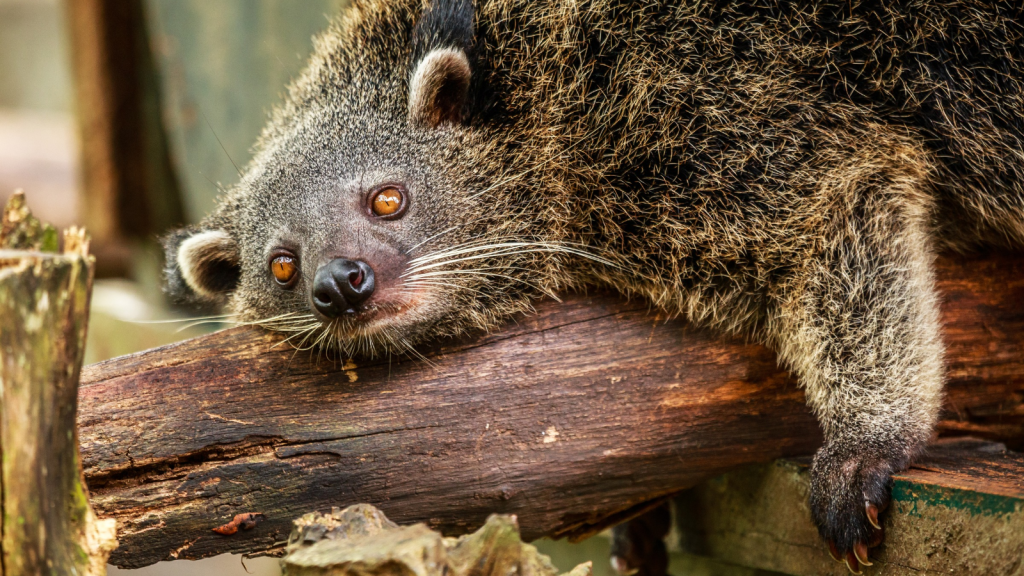
Binturongs have a rather unusual odour that sets them apart from other animals. They produce a scent that many people compare to buttered popcorn. This distinctive smell comes from a compound in their urine called 2-acetyl-1-pyrroline, which is the same chemical that gives freshly popped corn its mouthwatering aroma. Binturongs use this scent to mark their territory and communicate with other members of their species. Interestingly, this scent is so strong that it can often be detected by humans from several metres away, making binturongs one of the few mammals with an odour easily recognisable to people.
Masters of the Treetops
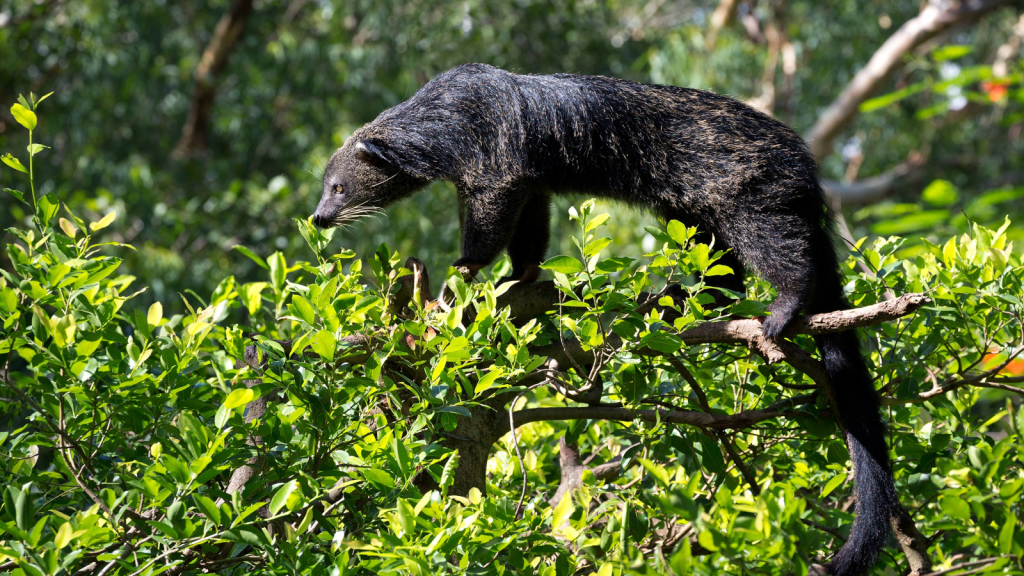
These agile creatures are excellent climbers, spending much of their time high up in the forest canopy. Binturongs have strong, curved claws that help them grip branches securely. Their most remarkable climbing tool, however, is their prehensile tail. This muscular appendage acts like a fifth limb, allowing binturongs to hang upside down and reach for fruit with their front paws. Their tails are so strong and flexible that binturongs can support their entire body weight with them, enabling them to navigate even the thinnest branches with ease.
Neither Bear Nor Cat
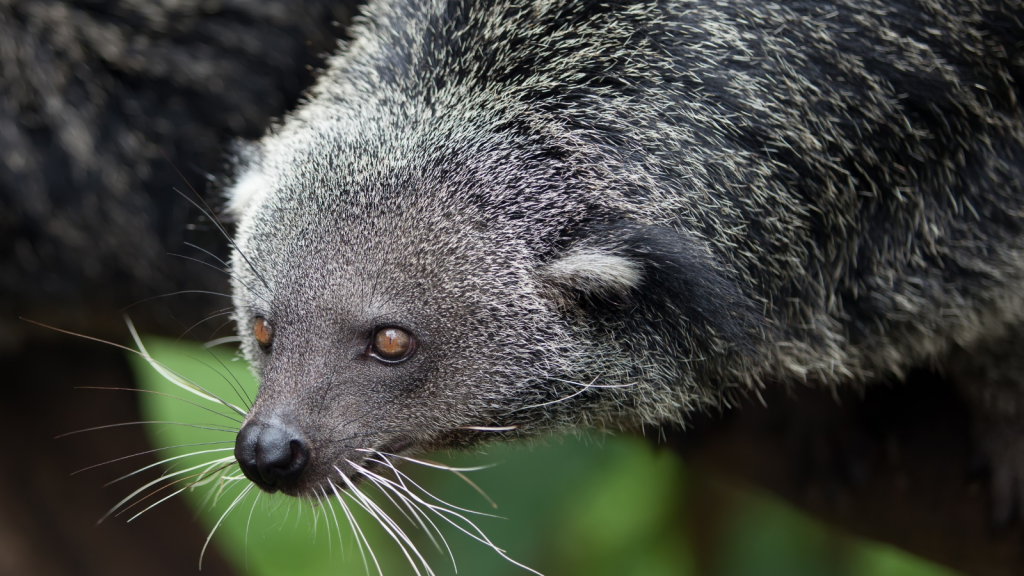
Despite their nickname “bearcat,” binturongs are neither bears nor cats. They belong to the family Viverridae, which includes civets and genets. Binturongs are the largest members of this family, with some individuals growing up to 1.5 metres long, including their tail. Their bear-like appearance and cat-like features led to the popular misnomer. In fact, binturongs are more closely related to small carnivores like mongooses than to bears or cats, showcasing the sometimes misleading nature of common names in the animal kingdom.
Slow and Steady Wins the Race
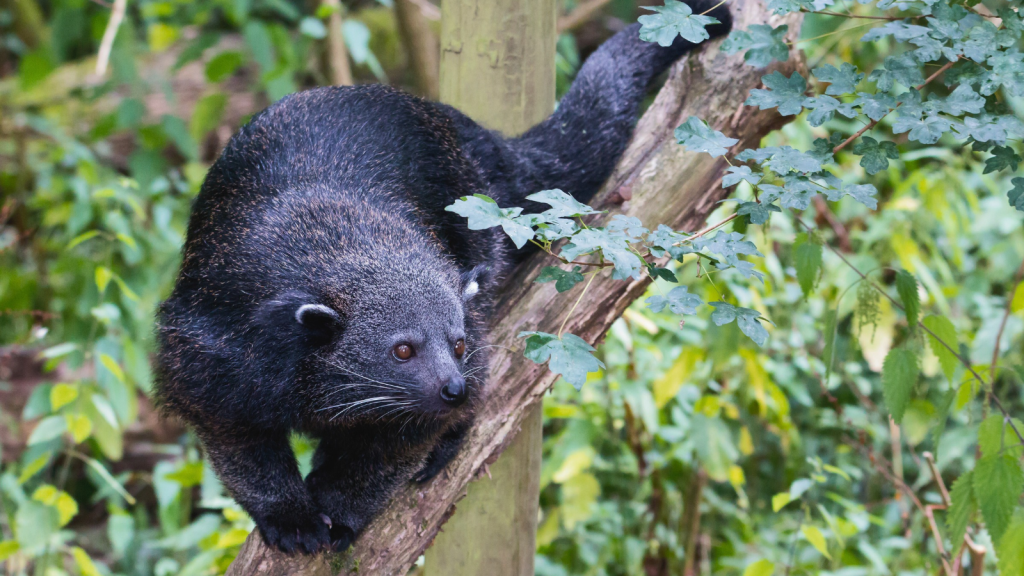
Binturongs are not known for their speed or agility on the ground. They move quite slowly compared to many other forest animals, typically ambling along at a leisurely pace. This unhurried lifestyle is partly due to their diet, which consists mainly of fruit and doesn’t require them to chase down prey. Their slow movement also helps them conserve energy in the hot, humid forests they call home. When on the ground, binturongs have a distinctive rolling gait, walking on the soles of their feet like bears rather than on their toes like cats.
Fruit Fanatics with a Twist
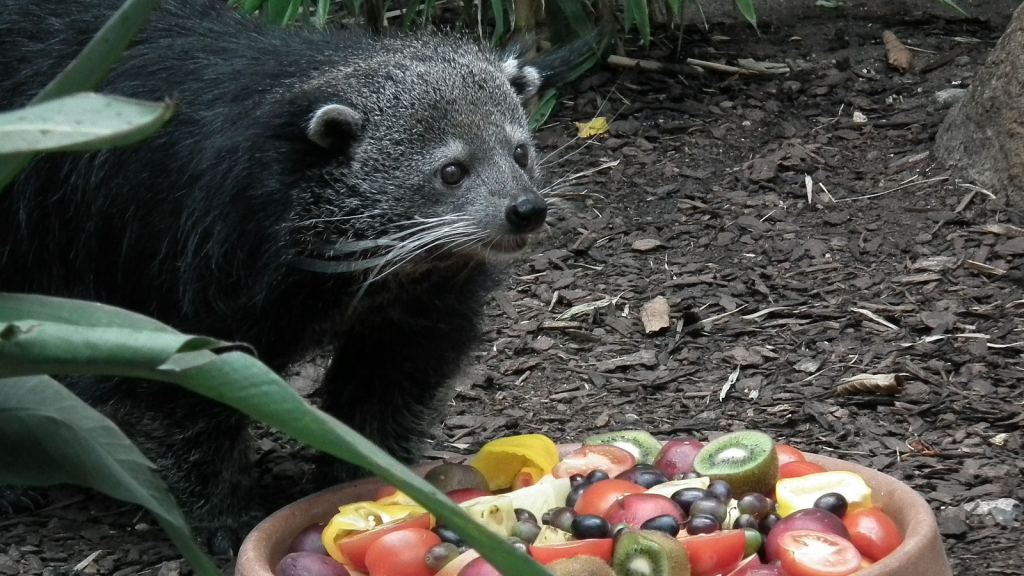
While binturongs are primarily fruit-eaters, they have a varied diet that includes some surprising items. They particularly enjoy figs, which make up a significant portion of their food intake. However, binturongs are opportunistic feeders and will also munch on leaves, small mammals, birds, and even fish. This diverse diet helps them adapt to changing food availability in their forest habitats. Their strong jaws and sharp teeth allow them to crack open tough-skinned fruits and nuts that other animals might find challenging to eat.
Nature’s Gardeners
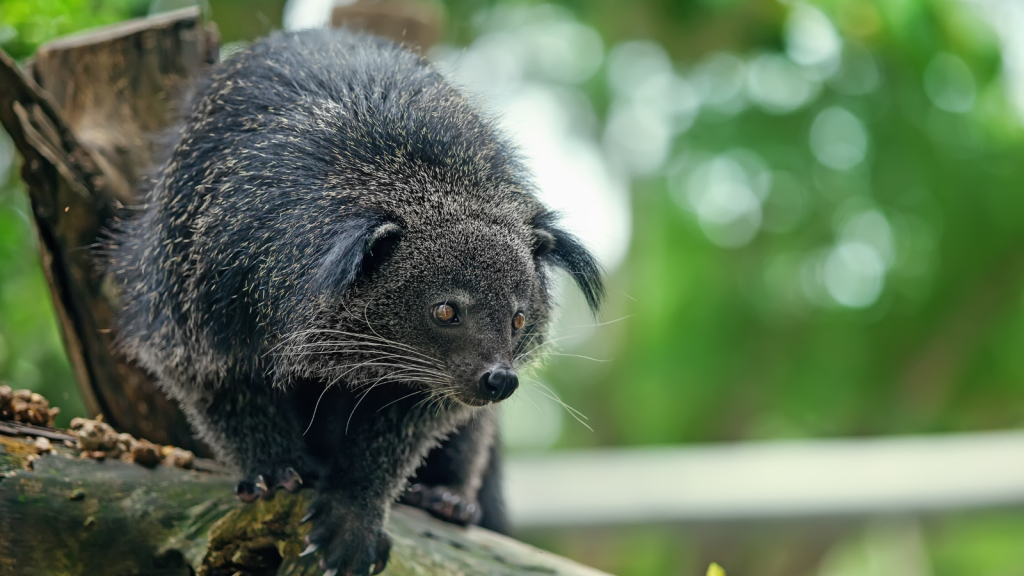
Binturongs play a crucial role in their forest ecosystems as seed dispersers. As they eat fruit and travel through the trees, they spread seeds in their droppings. Many of these seeds have a better chance of germinating after passing through a binturong’s digestive system. This process helps maintain the diversity and health of tropical forests across Southeast Asia. Some plants, like the strangler fig, rely almost exclusively on animals like binturongs for seed dispersal, making these creatures essential for forest regeneration.
A Rare Sight in the Wild
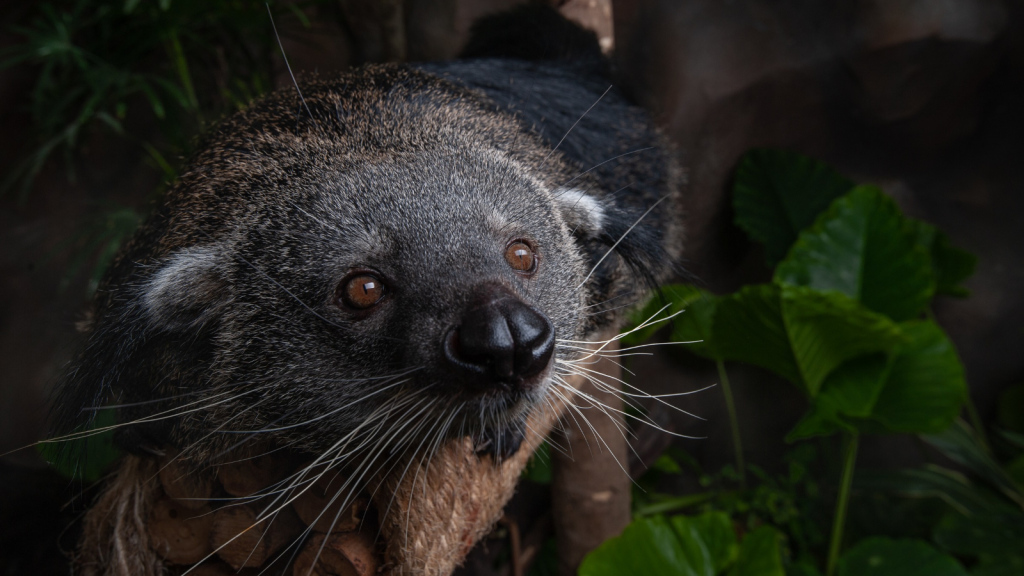
Spotting a binturong in its natural habitat is a rare treat. These elusive creatures are mostly active at night and prefer to stay hidden in the dense forest canopy. Their dark fur provides excellent camouflage among the shadows of the trees. Even researchers who study binturongs often rely on radio collars and camera traps to observe these shy animals. Their nocturnal habits and preference for dense, undisturbed forests make binturongs particularly vulnerable to habitat loss and fragmentation.
A Unique Family Structure
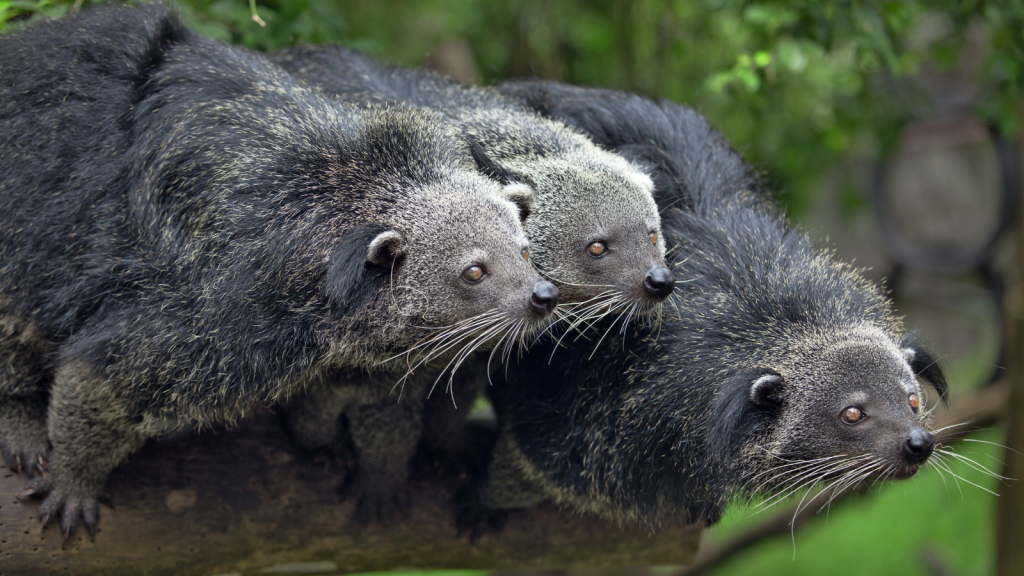
Binturongs have an unusual social structure compared to many other mammals. While they are generally solitary, females sometimes form small groups with their offspring. These family units can stay together for extended periods, with young binturongs remaining with their mother for up to two years. This extended family time allows young binturongs to learn essential survival skills. Male binturongs, on the other hand, tend to be more solitary and only seek out females during mating season.
The Binturong’s Sixth Sense
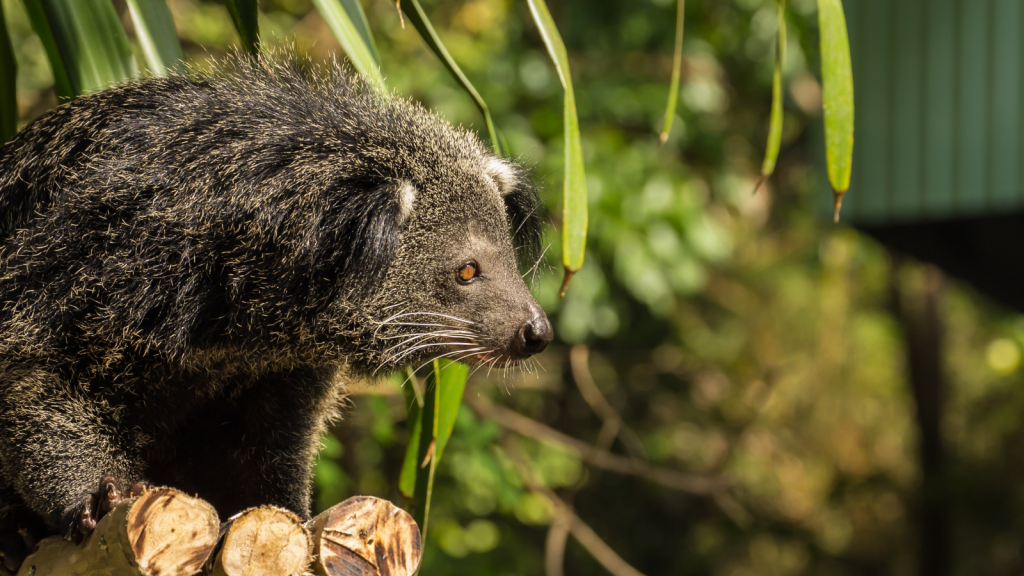
These remarkable animals have a keen sense of smell, which they use for more than just finding food. Binturongs can detect changes in air pressure and humidity through their sensitive noses. This ability helps them predict incoming weather changes, allowing them to seek shelter before storms hit. Their acute sense of smell also aids in identifying ripe fruits from a distance, ensuring they expend energy climbing only for nutritious meals.
A Vocal Vocabulary
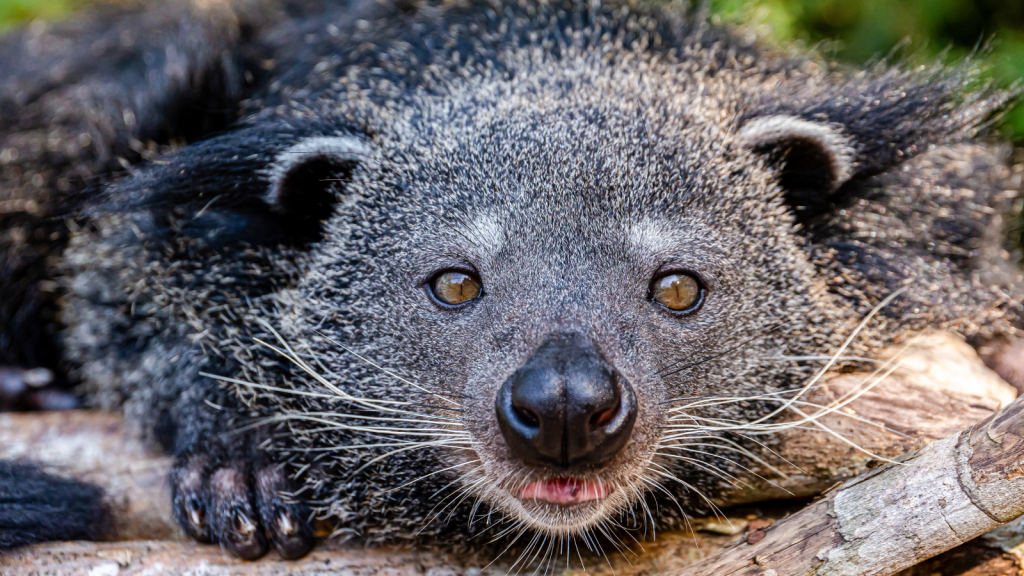
Binturongs have a wide range of vocalisations that they use to communicate. Their vocal repertoire includes chuckles, howls, and even a high-pitched wail that sounds surprisingly similar to a human baby’s cry. These varied sounds help binturongs express different emotions and warn others of potential dangers. They also use low-frequency rumbles that can travel long distances through the forest, allowing them to communicate with other binturongs without alerting potential predators.
Binturongs and Humans
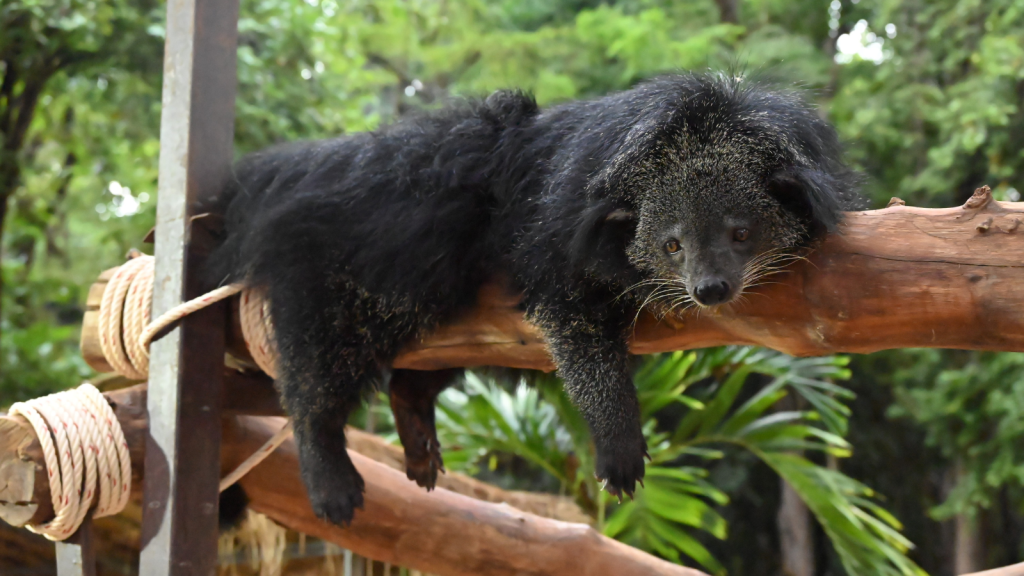
In some parts of their range, binturongs have a complex relationship with humans. They are sometimes kept as exotic pets, despite being wild animals with specific needs. In certain regions, binturongs are also hunted for their meat and fur. However, conservation efforts are underway to protect these unique creatures and educate people about their importance to forest ecosystems. Some local communities have started eco-tourism initiatives that allow people to observe binturongs in their natural habitat, promoting conservation while providing economic benefits.
Surprisingly Long-Lived
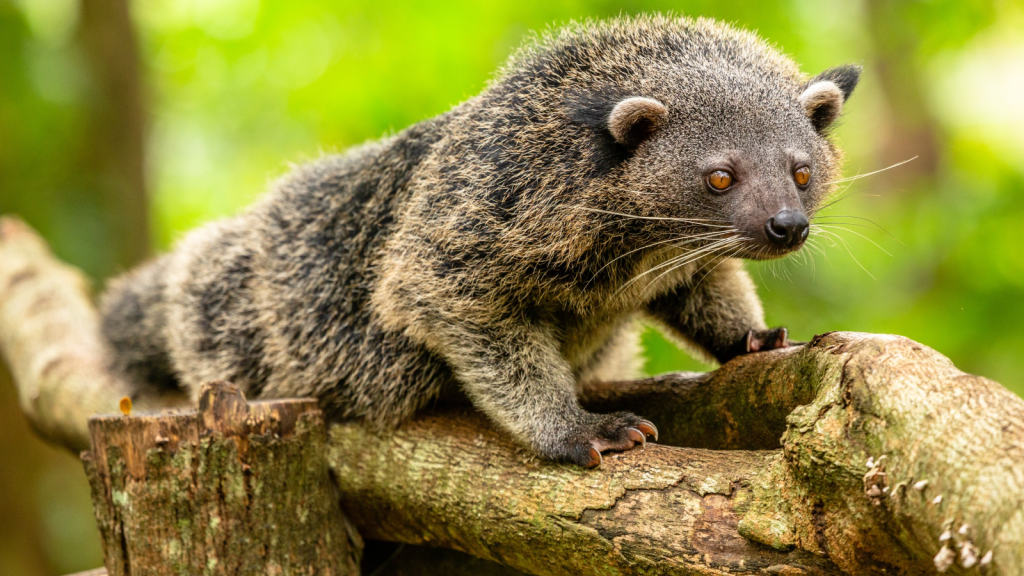
For their size, binturongs have a remarkably long lifespan. In the wild, they can live up to 18 years, while captive individuals have been known to reach 25 years of age. This longevity is unusual for a mammal of their size and may be related to their relaxed lifestyle and varied diet. Their long lifespan also means that binturongs have a relatively slow reproductive rate, making population recovery more challenging when numbers decline.
A Delayed Family Start
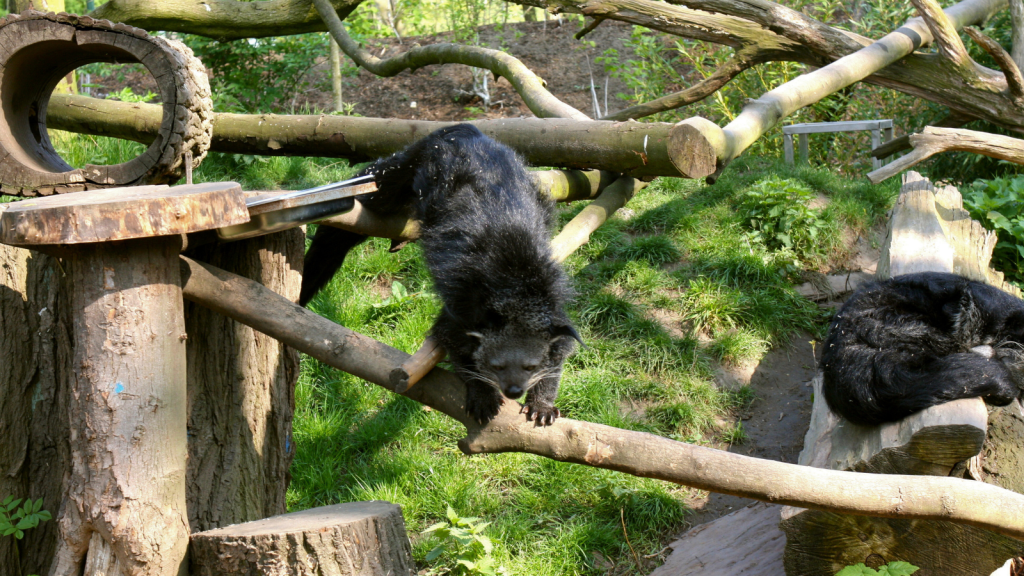
Binturongs have an interesting reproductive trait called delayed implantation. After mating, the fertilised egg doesn’t immediately implant in the uterus. Instead, it remains dormant for a period of time before development begins. This adaptation allows binturongs to time the birth of their young to coincide with favourable environmental conditions. The delay can last anywhere from 90 to 120 days, giving female binturongs the flexibility to ensure their offspring are born when food is plentiful.
Binturongs in Pop Culture
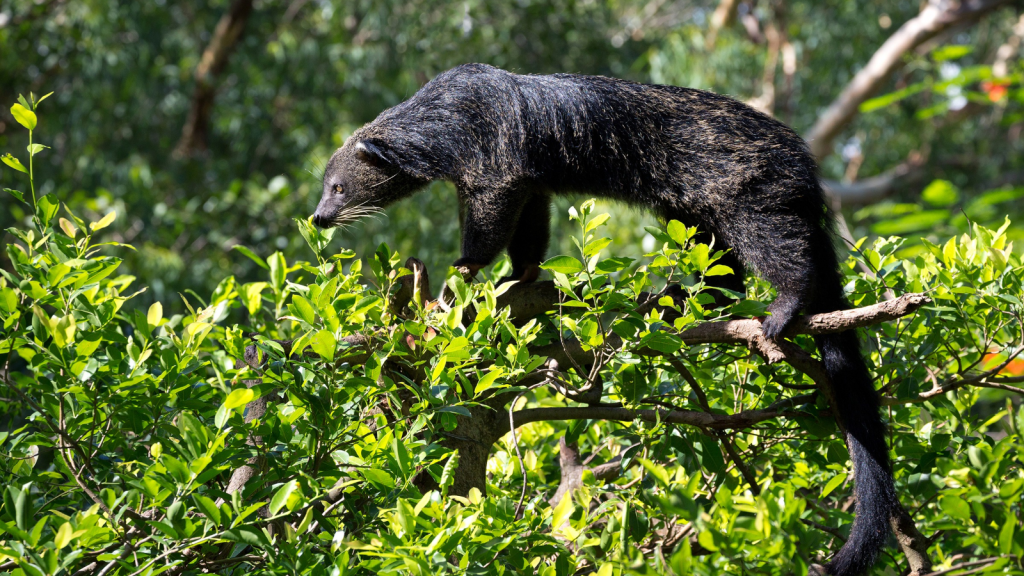
These unusual animals have made appearances in various forms of media, often as exotic or mysterious creatures. They’ve been featured in nature documentaries, used as inspiration for fictional creatures in books and games, and even appeared in some zoos’ educational programs. Their unique appearance and fascinating behaviours make them a popular subject for wildlife enthusiasts and storytellers alike. In recent years, binturongs have also become ambassadors for rainforest conservation, helping to raise awareness about the importance of protecting tropical ecosystems.
Becky is a fervent wildlife enthusiast and pet care expert with a diploma in canine nutrition. Her love for animals stretches beyond the domestic, embracing the wild tapestry of global fauna. With over a decade of experience in animal welfare, Becky lends her expertise to OutlandishOwl through insightful articles, captivating wildlife information, and invaluable guidance on pet nutrition. Her work embodies a deep commitment to understanding the intricate lives of animals and a passion for educating others on sustaining natural habitats. Becky's hands-on conservation efforts and her knack for translating complex dietary science into practical pet feeding tips make her an indispensable voice for creatures great and small.




